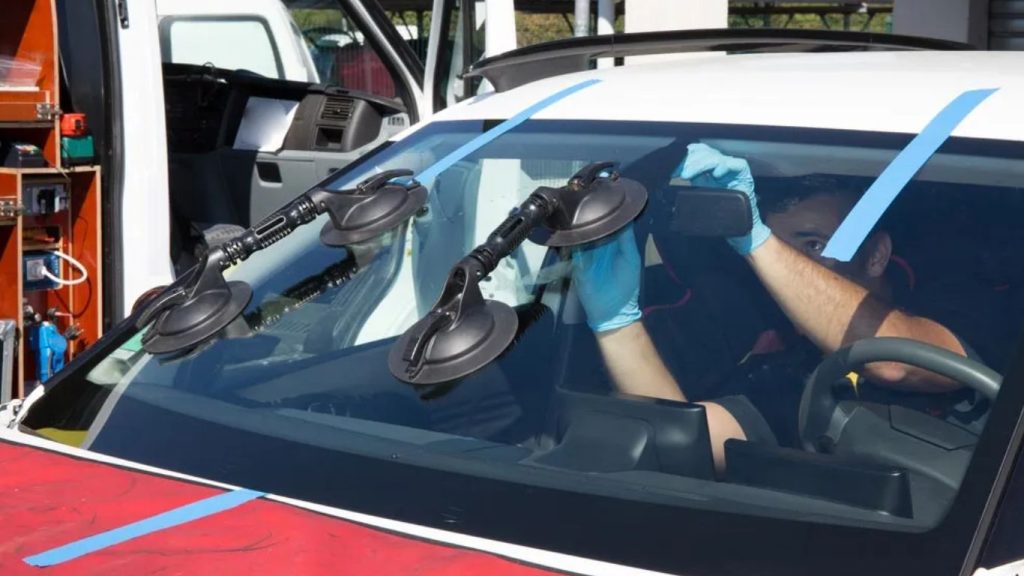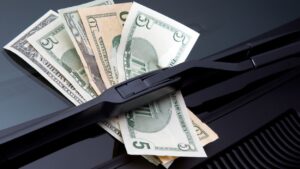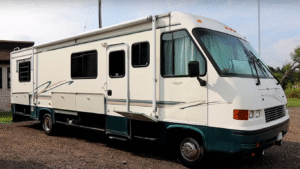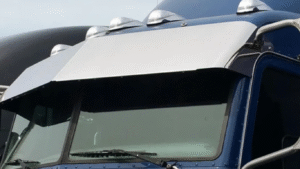Imagine you’re rushing to work, and out of nowhere, a flying rock cracks your windshield. You’re left wondering—how long will it take to replace this? Can you get it done during lunch, or will it leave you stranded for the day?
A windshield replacement isn’t just about swapping glass; it’s a precision job that affects your safety and driving experience. From adhesive drying times to car sensor recalibrations, several factors come into play.
In this guide, we’ll break down everything you need to know in simple terms, backed by insights from auto repair experts. You will get a clear timeline for windshield replacement. This applies whether you have a small sedan or a modern SUV with Advanced Driver Assistance Systems (ADAS). You will also get useful tips to make the process faster.
How Long Does It Take to Replace a Windshield?
A windshield replacement takes 30 minutes to 2 hours. The time depends on the vehicle type, adhesive, and technician. Standard windshields usually take 30 to 60 minutes to replace. However, cars with ADAS, sensors, or heated glass need over 90 minutes for calibration.
Fast-curing adhesives can speed up the process. Slower adhesives may take 2 hours for safety. Compact cars are quicker to fix. SUVs, trucks, and luxury models with larger, tech-heavy glass take longer. Weather conditions like humidity or cold can slow down drying. For a faster fix, consider mobile services or ask about quick-cure adhesives.
Factors That Influence Replacement Time
Getting a new windshield doesn’t always take the same time. A few things can speed it up or slow it down. Here’s what matters most, explained simply.
1. Your Vehicle Type
Small cars like a Honda Civic usually have basic windshields that are quick to replace—around 30-60 minutes. Bigger rides like SUVs or trucks have larger glass, so it might take closer to 2 hours. Fancy cars with tech (think BMWs or Teslas) can take even longer because of extra steps like setting up cameras or sensors.
2. How Bad the Damage Is
A tiny crack means less mess to clean up, so the job might stay under an hour. But if your windshield is smashed to bits, the technician has to remove all the pieces first. That adds time—maybe 15-30 minutes more—since they can’t rush it and risk leaving shards behind.
3. The Technician’s Skill
A pro who’s done this a hundred times can swap your windshield faster—sometimes in 45 minutes flat. Someone new or a DIY attempt might fumble with the tools or glue, stretching it to 2 hours or more. Skill matters because a sloppy job could mean leaks later.
4. Weather Outside
Hot, dry days help the glue (called adhesive) set fast, keeping things on the quicker side. But cold or wet weather slows it down—think an extra 15-30 minutes—since the glue needs to dry properly to hold the glass tight. No one wants a windshield popping out because it wasn’t ready!
Can You Drive Right Away?
No—even the fastest adhesive requires some curing time before your car is safe to drive. Technicians usually recommend waiting at least 30 minutes to an hour, but if ADAS recalibration is needed, it may take longer.
Do Sensors Slow It Down?
Yes—if your car has lane-keeping assist, automatic braking, or a heads-up display, these sensors need precise calibration to function correctly. This process can add 30 minutes to an hour to the total replacement time, ensuring your vehicle’s safety systems work as intended.
DIY vs. Professional Replacement: How long does it takes?
Thinking about replacing your windshield yourself or calling a pro? Let’s break down how long each takes and what you’re really getting into.
DIY: Takes 2-4 Hours (If You’re Lucky)
Doing it yourself sounds cool—grab a kit for $20-$50 and get to work. But here’s the catch: it’ll take 2-4 hours, maybe more if you’re not handy. You’ve got to cut out the old glass, clean everything, slap on the glue, and fit the new windshield just right. Mess up the glue or alignment? You’re stuck with leaks or a loose fit. Plus, you’ll need tools like a razor knife and some patience. If it’s your first go, expect to wrestle with it all afternoon.
Professional: Done in 30-120 Minutes
A pro can swap your windshield in 30 minutes to 2 hours, depending on your car. They’ve got the skills, tools, and tricks to make it quick—usually 45 minutes for a basic job, longer if your car’s got sensors or fancy glass. No leaks, no hassle, and you’re driving sooner. Sure, it costs $200-$500, but they don’t waste your day.
Does DIY Save Time or Waste It?
While DIY may seem cost-effective, it often takes twice as long and carries a high risk of installation errors. If the windshield isn’t sealed properly, you could face water leaks, visibility issues, or even safety hazards—costing more in the long run. For a faster, safer solution, professional replacement is the smarter choice.
How to Prepare for a Faster Windshield Replacement
Want your windshield fixed fast? A little prep can shave off time. Here’s what you can do to help the technician get it done quicker.
First, clean off your dashboard. Move sunglasses, papers, or that old coffee cup—anything in the way slows things down. Techs need clear space to work, and it might save 10-15 minutes. Next, park your car indoors if you can, like in a garage. Rain or cold slows the glue drying, so a dry spot keeps things moving—could cut 20 minutes off the wait. Also, peel off any old stickers from the windshield. It’s one less thing for them to scrape, speeding up the start.
Finally, book your slot early—like morning time when shops aren’t slammed. A busy afternoon might mean waiting longer for your turn. These tricks don’t rush the job, just make it smoother.
By following these simple steps, you can shave off extra minutes and ensure a smoother, hassle-free replacement.
Frequently Asked Questions
Yes! For the first 24 to 48 hours, avoid slamming doors, driving on rough roads, or exposing the windshield to high-pressure car washes. This prevents unnecessary pressure on the adhesive while it fully cures. Also, leaving a small gap in your windows helps balance air pressure inside the car.
While rare, a new windshield can crack if improperly installed or exposed to extreme conditions. Sudden temperature changes, structural stress, or debris impact can also cause cracks. Ensuring the correct adhesive curing time and using OEM-quality glass reduces this risk.
Signs of a proper installation include:
✔️ A flush, even fit with no gaps or misalignment.
✔️ No excessive wind noise or water leaks when driving.
✔️ Proper ADAS sensor recalibration (if applicable).
If you notice distortion in the glass, unusual reflections, or whistling sounds, get it checked by a professional.
Yes, winter wiper blades are designed with a rubber casing that prevents ice buildup, making them more effective in snow and freezing conditions. Standard wipers can freeze and become less effective in cold weather.
Not necessarily! A professionally installed, high-quality windshield does not lower resale value. However, using cheap aftermarket glass or improper installation can reduce the car’s safety and may raise concerns for potential buyers. Always opt for OEM or high-quality replacements for better long-term value.
Most shops offer overnight storage if the replacement process takes longer due to sensor recalibration or additional repairs. It’s best to check with the auto glass service in advance to confirm secure parking arrangements.
Delaying windshield replacement can compromise your safety. Even small cracks weaken the structural integrity of your car, making it more vulnerable in an accident. Temperature changes, vibrations, and moisture can cause the crack to spread, leading to higher repair costs.
No! Windshields differ based on material, thickness, and technology. OEM (Original Equipment Manufacturer) windshields match your car’s specifications and safety standards, while aftermarket glass may have slight variations in clarity, fit, and durability. If your car has ADAS features, an OEM windshield is recommended for proper recalibration.





